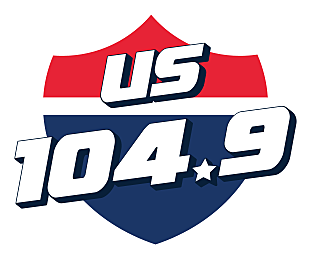35 Years Ago: David Byrne’s Inventive ‘Catherine Wheel’ Precedes Talking Heads Reunion
David Byrne's fascination with African rhythms, first heard on the Talking Heads' Remain in Light, reached its zenith on this second solo release – even as The Catherine Wheel finally brought him around to his old band again.
An offbeat collaboration with choreographer/dancer Twyla Tharp, The Catherine Wheel might not have seemed like the most obvious moment of detente. After all, each member of the Talking Heads had been busy elsewhere in the period before Byrne's album arrived in December 1981. Chris Frantz and Tina Weymouth released the Tom Tom Club's well-received debut, while Jerry Harrison issued The Red and the Black.
Byrne, meanwhile, had continued down his own road of rhythmic exploration, releasing an album of ambient world-music electronica just that February with Brian Eno called My Life in the Bush of Ghosts. As this Byrne-Tharp collaboration premiered on stage the following September, he seemed to be moving further and further away from his band's budding mainstream success.
"I've found myself working with a lot of rhythms that I wouldn't picture in a dance club," Byrne told Robert Palmer of the New York Times in 1981. "Certain rhythms make your body move the way you move in a club, and in this case I was working with a much greater variety of dance movements – some of which would be really inappropriate in clubs."
The Catherine Wheel, which had an initial schedule of 11 additional showings during that Broadway season, wasn't the only Tharp dance-theater production to incorporate rock music. She'd also choreographed songs by the likes of Bruce Springsteen, the Beach Boys and Supertramp. But her new project stood apart in that it was not only a joint creation with the Talking Heads frontman, but one that – like Byrne himself in those days – moved well beyond the traditional pop-song structure.
Listen to David Byrne Perform 'Two Soldiers''
Going in, he frankly couldn't see where his group fit in with this new direction. "I don't think of Talking Heads as mainly an instrumental band," Byrne told Trouser Press in 1982. Besides, these "serious rhythms ... wouldn't be appropriate with the band."
Byrne's unique mixture of modern sounds and eruptive cadences, on the other hand, did seem to reflect movements Tharp had already created for her troupe. His music also helped her create new dance shapes. Byrne would send Tharp basic tracks (sometimes with only a guitar and bass, or a rhythm signature) almost as soon as he recorded it. In this way, The Catherine Wheel was ultimately completed in tandem, at dance rehearsals and inside a recording studio – but the ideas flowed in both directions.
As she sketched out the choreography, Byrne would continue adding sounds – blending electronics with the odd vocal sample ("The Red House"), basic rock instrumentation with odd-ball things like the echoes Tharp got from from a half-full pan of water ("Cloud Chamber"). "This has been a real collaboration," Byrne told the Times. "The way I work, recording basic tracks with just a few instruments and then building layers of rhythm and texture of top of that, lent itself to the way we were able to work together."
Slowly but surely, however, the Talking Heads filtered back onto Byrne's creative path, in ways large and small.
Listen to the Talking Heads Perform 'What a Day That Was'
Long-time band co-hort Jerry Harrison ended up adding organ, drums and clavinet to the sound bed. Guitarist Adrian Belew and keyboardist Bernie Worrell – two members of the Talking Heads' turn-of-the-'80s expanded lineup – were also featured.
Eno, who produced three straight Talking Heads albums through 1980, co-wrote "Two Soldiers" and "Ade," while contributing a variety of instrumental asides including keyboards, Prophet synthesizer and (no kidding) "screams." Then there was John Miller Chernoff. In the period before Remain in Light, Byrne found inspiration in his 1979 book African Rhythm and African Sensibility – and the author returned to add rhythm and song ideas to a number of pieces on The Catherine Wheel.
A circle had been completed once more. By the time this score arrived on store shelves, the Talking Heads were, in fact, already back together. They quickly assembled a compilation live album called The Name of This Band Is Talking Heads, then returned to the studio to record Speaking in Tongues, even as the impact of this Byrne-Tharp project came into sharper focus.
Four tracks from The Catherine Wheel – "Big Blue Plymouth," "My Big Hands," "Big Business," and "What a Day That Was" – emerged on the set list for the band's subsequent tour. The latter two songs appeared in the live Talking Heads documentary Stop Making Sense, while only "What a Day That Was" was included on the soundtrack album.
"This was the culmination," Byrne said of The Catherine Wheel, in his 1982 talk with the Trouser Press. "Now, I can use [these rhythmic ideas] when it's appropriate – instead of concentrating on it so much. I feel now I can assimilate some of those things, and use them in a more natural way."
Rock's Best Artist Vs. Record Label Disputes
More From US 104.9


![Can a Home Have Too Many Christmas Decorations? [POLL]](http://townsquare.media/site/341/files/2016/12/Lights.jpg?w=980&q=75)







